PLAYBOY
50 YEARS THE PHOTOGRAPHS Text by James R. Petersen

Copyright 2003 Playboy Enterprises International, Inc.
All rights reserved. No part of this book may be reproduced
in any form without written permission from the publisher.
constitutes a continuation of the copyright page. Library of Congress Cataloging-in-Publication Data available.
eISBN 978-1-4521-4449-8Designed by VSA Partners, Inc. Chronicle Books LLC
680 Second Street
San Francisco, California 94107 www.chroniclebooks.com

 HEFNER, WORKING ON THE MAGAZINE IN HIS BEDROOM
HEFNER, WORKING ON THE MAGAZINE IN HIS BEDROOM Photographer Unknown
CA. 1960 INTRODUCTION
50 YEARS
OF
PHOTOGRAPHY
 Scientists at the Massachusetts General Hospital, a Harvard affiliate, said they wanted to see how the brain responded when heterosexual men were exposed to photographs of women of varying degrees of attractiveness.
Scientists at the Massachusetts General Hospital, a Harvard affiliate, said they wanted to see how the brain responded when heterosexual men were exposed to photographs of women of varying degrees of attractiveness.
The researcher found, among other things, that the part of the brain that responds to facial beauty is the same area that is activated by food, recreational drugs, and money. VITAL SIGNS: PATTERNS Beauty, It Turns Out, Lights the Brain By Eric Nagourney New York Times, February 19, 2002 The experiment was simple. Men looked at and evaluated pictures of attractive women. Not surprisingly, they lingered over the beautiful. As they did, brain scans showed the reward circuitry of their brains lighting up like a pinball machine. It took scientists fifty years to figure out what Hugh Hefner knew from day one. Beauty is its own reward.
Its in the hardwiring. The publisher of Playboy grew up with two competing visions. Hollywood films of the thirties filled the young mans mind with opulent dreams, with visions of glamour and the good life. But it was the newsstand that gave him a tactile sense of the world. Hefner devoured Life,Look,Esquire,True, and Park East; he papered his bedroom with Petty girls and Vargas art. During WWII he kept a pinup in his footlocker.
In those days pinups were morale boosters (which is another way of saying they ignited those reward circuits). To understand the revolution represented by Playboy, one has to look at the newsstand of the fifties. There were the sweaty armpit mens magazines, full of grizzled rogues thrashing through thorny thickets or splashing about in fast-flowing streams. Nudity was practically nonexistent; at best it was nonsensual, more likely to strike the funny bone than the reward circuits. There were the coarse and grainy pictures in Focus and Foto, naughty picture stories with lots of cleavage in titles like Titter and Whisper, and plenty of native nudity in National Geographic. By the fifties, Esquire had abandoned testosterone, purging the Petty girls, the sexy cartoons, backing away from the glory days of the WWII pinups, to become an effete, tweedy, neutered publication.
Arnold Gingrich, the publisher, said he wanted to rescue Esquire from bawditry, and actually called for a New Puritanism. When that magazine moved to New York in 1951, Hefner, then working in Esquires subscription and renewal department, stayed in Chicago to work on his own magazine. Hed been in training for the moment all his life.  MODEL ON PLATFORM IN DESERT
MODEL ON PLATFORM IN DESERT
By Richard Fegley
DATE UNKNOWN PHOTOGRAPHER AND MODEL
PHOTOGRAPHER AND MODEL
By David Chan
DATE UNKNOWN RICHARD FEGLEY WITH MASAII LOOKING THROUGH CAMERA
RICHARD FEGLEY WITH MASAII LOOKING THROUGH CAMERA
By Nik Wheeler
APRIL 1983 Hefners bold stroke: to publish nudes of Marilyn Monroe in full color on the best paper he could afford in the very first issue. And to never back down from that promise. Playboy would be a visual feast.
Hefner worked with illustration, cartoons, and pictorials, pacing the magazine with the care of a film director. The early issues, put together with Scotch tape and paper clips, were a blueprint for all that followed. For the first issues Hefner made do with pictorial features of women bought from Graphic House, the same stock agency that supplied Art Photography with figure studies. But he had a vision of something much different. He has explained the genesis of the Playmate this way: Always guiding my instincts were my fond memories of the pinup art of my youth. Just as the pinups of the past have been referred to as American Good Girl, the Playmates have reflected my own romantic view of the opposite sex.
From the very first, I was looking for the girl next door as part of a positive, life-affirming attitude toward human sexuality. In a real sense, the Playmate of the Month was as much a political statement as the Playboy philosophy, and it had much more to do with female emancipation than exploitation, although I didnt think in those terms in the magazines early days. I was simply trying to get across the message that good girls liked sex, too. Hefner has always been the magazines photo editor. Almost every article on his empire shows him at work, crouched over a light box looking at transparencies, color separations spread out on his round bed or across the floor of an office. The Schneider-Kreuznach lupe is almost as much a part of his anatomy as the pipe or a can of Pepsi.
At the height of the mythmaking, when Hefner was touted as Americas most eligible bachelor, a man whose job brought him into contact with the worlds most beautiful women, Hefner would tell a reporter as he labored over a pictorial, Wouldnt the world be surprised if they knew this is what I did for a living. Forty, sixty, eighty hours a week, for fifty years.  BODY PAINTING BY MARIO CASILLI
BODY PAINTING BY MARIO CASILLI
Photographer Unknown
DECEMBER 1969 Sure, the job was a great way to meet girls, but theres an anecdote, possibly apocryphal, about the priorities in the mans life. Hefner had made a date for an assignation with a ravishing young model (he planned to meet her at the Ambassador East), but he picked up the lupe and started looking at transparencies of her photo layout, lost track of time, and missed the date. Hefner hired Vince Tajiri, a former editor of Art Photography, to help out with the fledgling magazine. Tajiri liked to joke that there wasnt enough work for a photography editor.



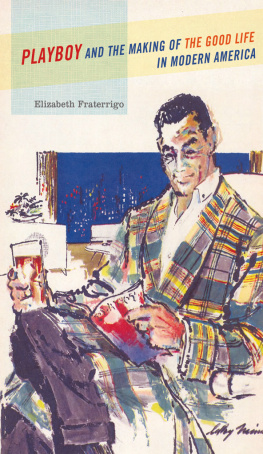
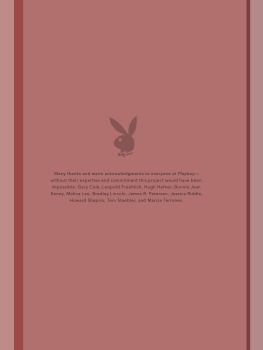
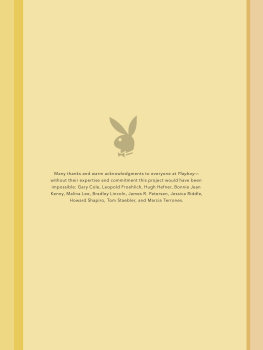

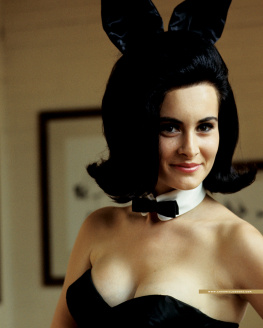

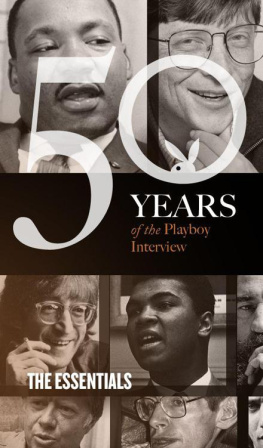

 Copyright 2003 Playboy Enterprises International, Inc.
Copyright 2003 Playboy Enterprises International, Inc.
 HEFNER, WORKING ON THE MAGAZINE IN HIS BEDROOM Photographer Unknown CA. 1960 INTRODUCTION
HEFNER, WORKING ON THE MAGAZINE IN HIS BEDROOM Photographer Unknown CA. 1960 INTRODUCTION 
 MODEL ON PLATFORM IN DESERT
MODEL ON PLATFORM IN DESERT PHOTOGRAPHER AND MODEL
PHOTOGRAPHER AND MODEL RICHARD FEGLEY WITH MASAII LOOKING THROUGH CAMERA
RICHARD FEGLEY WITH MASAII LOOKING THROUGH CAMERA BODY PAINTING BY MARIO CASILLI
BODY PAINTING BY MARIO CASILLI